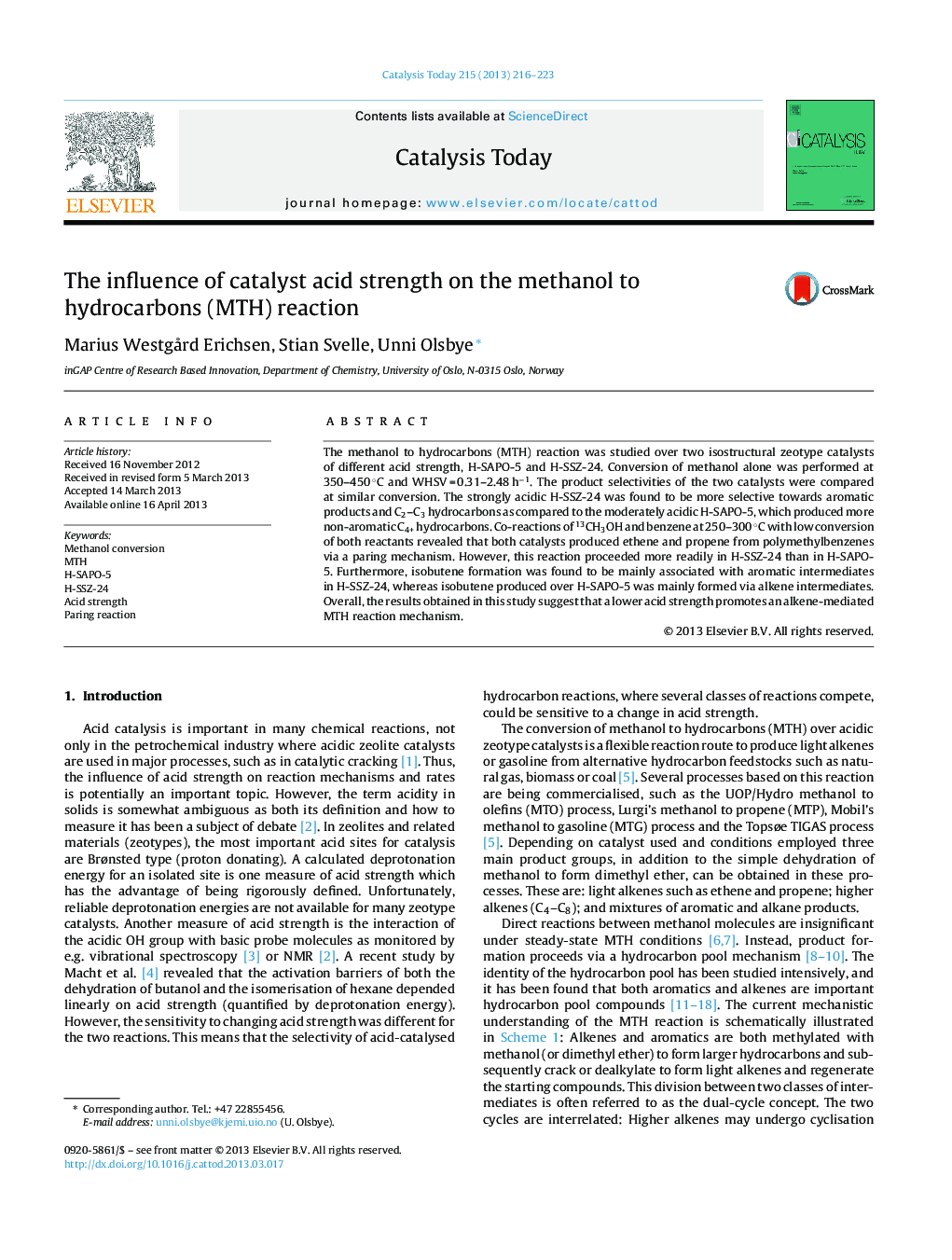| Article ID | Journal | Published Year | Pages | File Type |
|---|---|---|---|---|
| 54639 | Catalysis Today | 2013 | 8 Pages |
•Two isostructural zeotypes with different acid strength were tested for the methanol to hydrocarbons reaction.•Higher acid strength led to higher selectivity towards aromatic products and ethene.•Alkenes can be produced from polymethylbenzenes via a paring-type reaction.
The methanol to hydrocarbons (MTH) reaction was studied over two isostructural zeotype catalysts of different acid strength, H-SAPO-5 and H-SSZ-24. Conversion of methanol alone was performed at 350–450 °C and WHSV = 0.31–2.48 h−1. The product selectivities of the two catalysts were compared at similar conversion. The strongly acidic H-SSZ-24 was found to be more selective towards aromatic products and C2–C3 hydrocarbons as compared to the moderately acidic H-SAPO-5, which produced more non-aromatic C4+ hydrocarbons. Co-reactions of 13CH3OH and benzene at 250–300 °C with low conversion of both reactants revealed that both catalysts produced ethene and propene from polymethylbenzenes via a paring mechanism. However, this reaction proceeded more readily in H-SSZ-24 than in H-SAPO-5. Furthermore, isobutene formation was found to be mainly associated with aromatic intermediates in H-SSZ-24, whereas isobutene produced over H-SAPO-5 was mainly formed via alkene intermediates. Overall, the results obtained in this study suggest that a lower acid strength promotes an alkene-mediated MTH reaction mechanism.
Graphical abstractFigure optionsDownload full-size imageDownload high-quality image (298 K)Download as PowerPoint slide
